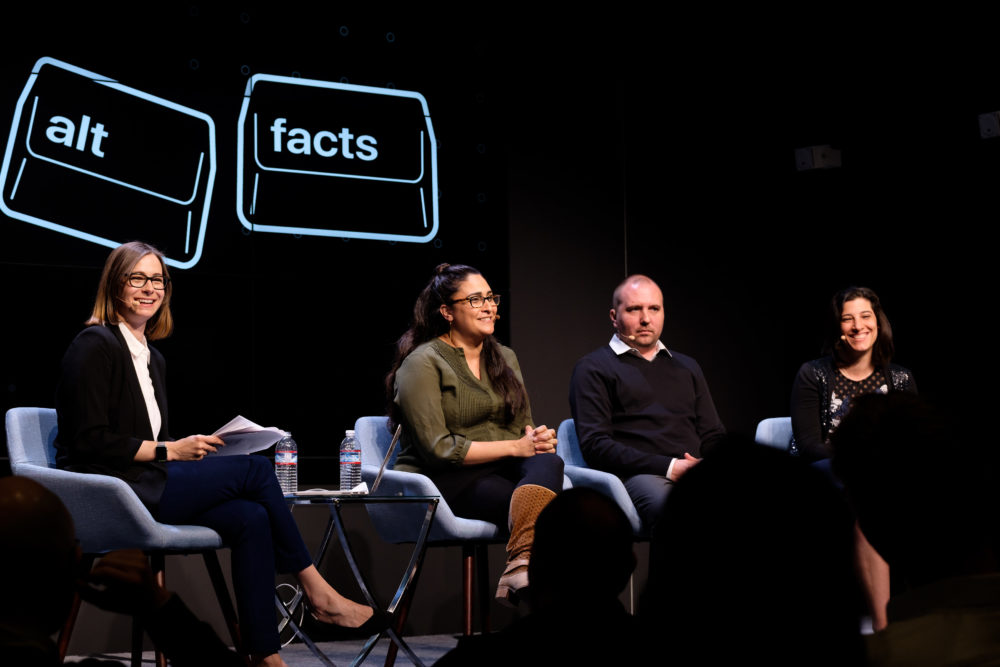The truth is out there. But online, it feels like it’s harder than ever to find. Consider this sobering statistic from a recent MIT study: on Twitter, lies are 70% more likely to be retweeted than facts. Somehow, the information age became the disinformation age. Where do we go from here?
All season long on IRL, we’ve been talking about how our online reality shapes and warps our life offline. Digital disinformation obscures a lot of things. But it also makes one thing clear. Being wired together isn’t enough. We need human connections, philosophical connections and intellectual connections on top of our fiber optic cables, wifi signals and server rooms. What happens to information online — that’s on us, too.
In the season finale of IRL, recorded live in San Francisco, we navigate the strange new world of social media misinformation. The New York Times’ Sheera Frenkel discusses the shifting landscape of journalism, and argues for platform accountability. DisInfoMedia, Inc. founder Jestin Coler talks about why confirmation bias comes up in our feeds. And Data For Democracy Policy Lead and Mozilla Fellow Renee DiResta breaks down the hidden virality engines responsible for spreading hoaxes online. Listen up.
It’s not always easy to separate fact from fiction online. But it’s not impossible to stop the spread of information, at least from your own account. Follow these three steps to become a more informed source for the rest of your network.
Compare before you share
Your followers read what you share, so do them a solid. Make sure you know exactly who’s behind the report you’re reading. If you’re thinking about sharing the story, read as many articles as possible from reliable outlets on the ground. Verify a story’s accuracy by tracking down the original source, and make sure that what you’re sharing isn’t perpetuating a hoax. And remember, not everyone gets satire, sigh.
Facebook Vows Not To Hand Over Users’ Medical Records To Government https://t.co/0AjWRGWUyc pic.twitter.com/UsX6Bbqqhz
— The Onion (@TheOnion) March 20, 2018
Check pictures using image search
It’s easy to fall for fake images. After all, they *look* like photos. Before you click share on that picture, use Google Image Search to search by file or URL.
Justy a sample of what NRA supporters are doing to teenagers who survived a massacre (real picture on the right). pic.twitter.com/czX7IHD8ur
— Don Moynihan (@donmoyn) March 25, 2018
Own your mistakes
News moves faster now than at any point in history. It’s ok to share something in error. If you do, edit or delete your post, so that disinformation is no longer in circulation.
I’ve deleted a tweet and would like to issue an apology. Please read and re-tweet to help me spread the word! Thanks! pic.twitter.com/R6CNyn4bVV
— Jenna Fischer (@jennafischer) December 27, 2017
Thank you for this, @jennafischer. Very gracious, a great example of how civil discussion can and should take place. https://t.co/i14sKpicMJ
— Senator Hatch Office (@senorrinhatch) December 27, 2017



